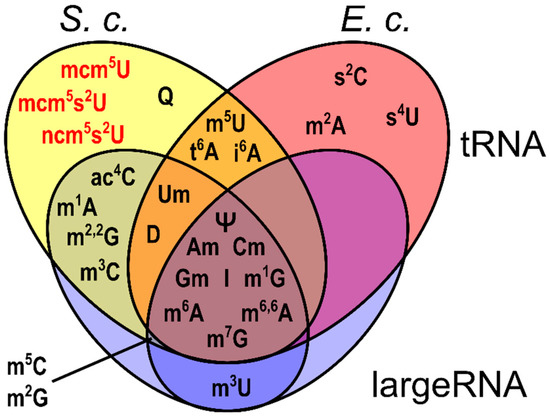Production and Application of Stable Isotope-Labeled Internal Standards for RNA Modification Analysis
2019-01-05
Kayla Borland, Jan Diesend, Taku Ito-Kureha, Vigo Heissmeyer, Christian Hammann, Amy H. Buck, Stylianos Michalakis and Stefanie Kellner
Genes, 2019, 10(1), 26
Post-transcriptional RNA modifications have been found to be present in a wide variety of organisms and in different types of RNA. Nucleoside modifications are interesting due to their already known roles in translation fidelity, enzyme recognition, disease progression, and RNA stability. In addition, the abundance of modified nucleosides fluctuates based on growth phase, external stress, or possibly other factors not yet explored. With modifications ever changing, a method to determine absolute quantities for multiple nucleoside modifications is required. Here, we report metabolic isotope labeling to produce isotopically labeled internal standards in bacteria and yeast. These can be used for the quantification of 26 different modified nucleosides. We explain in detail how these internal standards are produced and show their mass spectrometric characterization. We apply our internal standards and quantify the modification content of transfer RNA (tRNA) from bacteria and various eukaryotes. We can show that the origin of the internal standard has no impact on the quantification result. Furthermore, we use our internal standard for the quantification of modified nucleosides in mouse tissue messenger RNA (mRNA), where we find different modification profiles in liver and brain tissue.








